As a rider on the Nightfox Factory MTB team, I understand how crucial it is to select the right tire and wheel size for your mountain bike. The correct size can significantly impact your riding experience, from handling and speed to comfort and safety.
In this comprehensive guide, we’ll delve into everything you need to know about choosing the right tire and wheel size for your mountain bike.
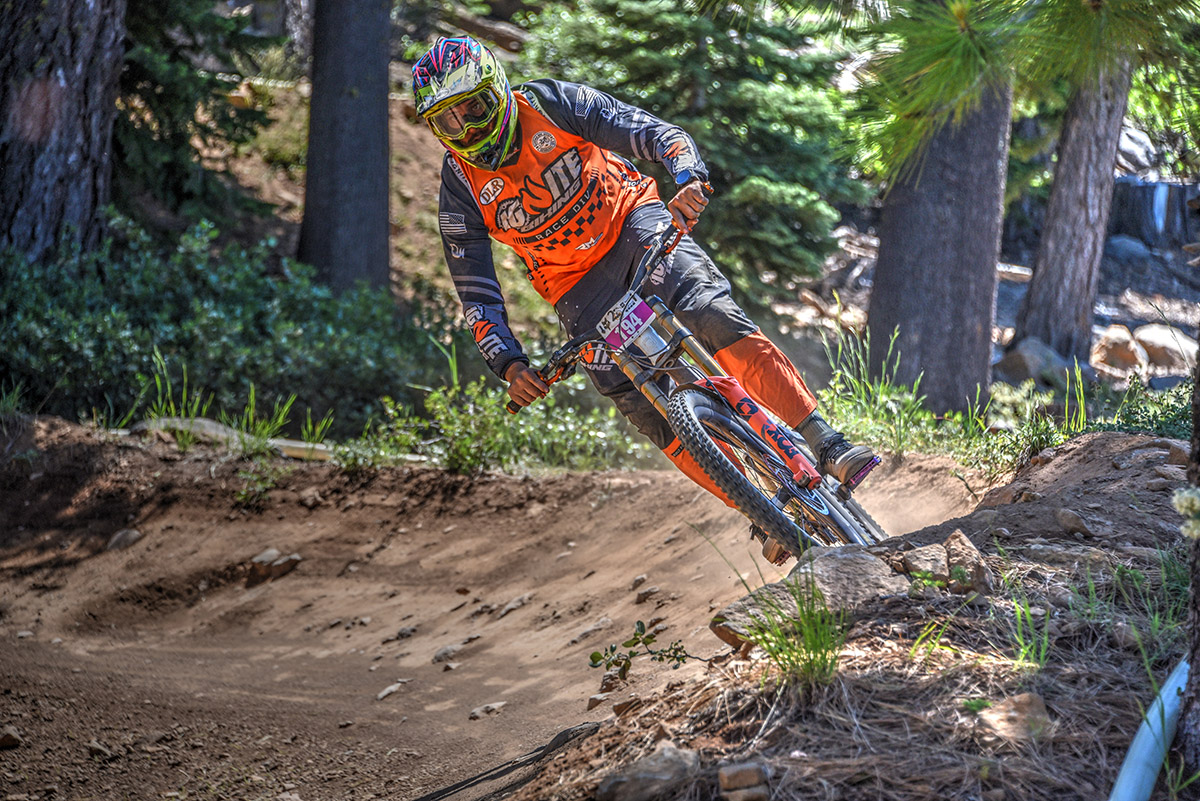
1. Understanding Tire and Wheel Sizes
1.1. Basics of Tire and Wheel Sizes
When selecting tires and wheels for your mountain bike, it’s crucial to understand their dimensions. Tire size is typically denoted by a two-part number, such as 29×2.4″. The first number (29) represents the tire’s diameter in inches, while the second number (2.4) indicates the tire’s width in inches. Similarly, wheels are often labeled by their diameter, such as 26″, 27.5″, or 29″.
How Tire Width and Diameter Affect Performance
Tire Width: Wider tires offer better traction and stability, making them ideal for rough and loose terrains. They provide a larger contact patch with the ground, enhancing grip and control. However, they can add weight and rolling resistance, potentially making pedaling more challenging. On the other hand, narrower tires are lighter and faster on smooth surfaces but may lack the grip and comfort needed for technical trails.
Tire Diameter: The diameter of the tire influences the bike’s rolling efficiency and handling. Larger diameters (such as 29″) roll over obstacles more easily, offering a smoother ride and maintaining momentum better. This makes them suitable for cross-country and trail riding. Smaller diameters (like 26″) provide more agile handling and are often preferred for technical, tight trails and downhill riding where quick maneuverability is essential.
Importance of Matching Tire Size to Wheel Size
It’s essential to ensure that your tire size matches your wheel size. Incompatible tire and wheel sizes can lead to poor performance and safety issues. Each wheel size is designed to accommodate a specific range of tire widths, so selecting the appropriate combination ensures optimal performance, handling, and safety. For instance, a wheel designed for 29″ tires will not perform correctly with 27.5″ tires.
Always check your bike’s specifications and recommendations to choose the right tire and wheel size combination. Matching them correctly not only enhances your bike’s performance but also ensures a safer and more enjoyable riding experience.
1.2. Common Mountain Bike Tire Sizes
Mountain bike tires come in three standard sizes: 26″, 27.5″ (also known as 650B), and 29″. Each size offers distinct advantages and disadvantages, making them suitable for different terrains and riding styles. Let’s delve into the specifics of each size to help you make an informed decision.
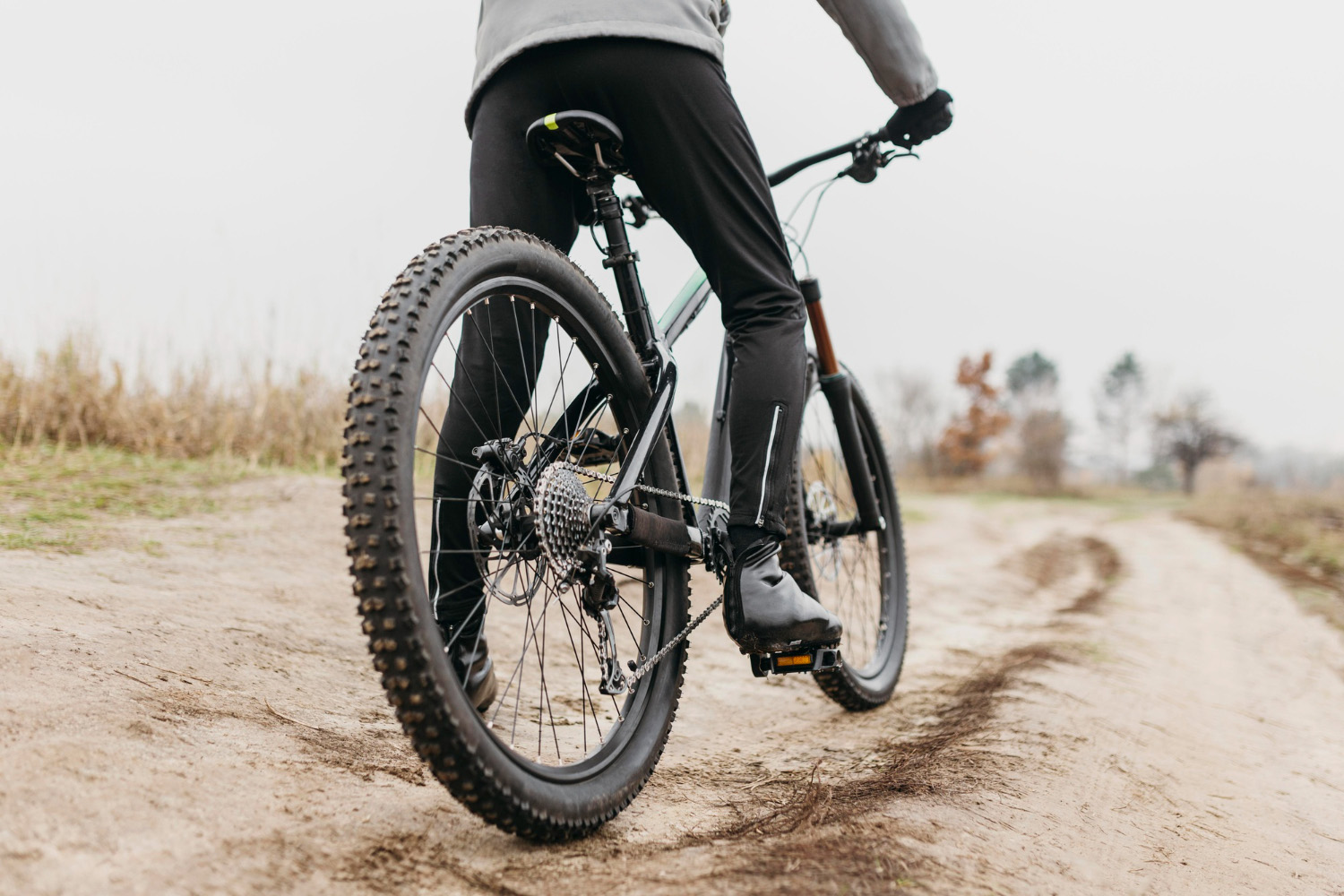
26″ Tires
Pros:
✓ Agility: Smaller diameter provides quick, nimble handling, ideal for technical and tight trails.
✓ Acceleration: Lighter weight and smaller size allow for faster acceleration.
✓ Maneuverability: Easier to maneuver, making them great for downhill and freeride biking.
Cons:
✗ Obstacle Clearance: Less efficient at rolling over obstacles, resulting in a bumpier ride.
✗ Traction: Smaller contact patch with the ground, which can reduce traction compared to larger tires.
Ideal Terrain and Riding Styles: Best suited for downhill, freeride, and dirt jump biking where agility and quick handling are crucial. Also preferred by shorter riders due to the smaller frame size compatibility.
27.5″ Tires (650B)
Pros:
✓ Versatility: Strikes a balance between the agility of 26″ and the rolling efficiency of 29″.
✓ Traction and Stability: Offers better traction and stability than 26″ due to a larger contact patch.
✓ Acceleration and Handling: Provides good acceleration and responsive handling.
Cons:
✗ Compromise: While versatile, it doesn’t excel in any one area as much as the 26″ or 29″.
Ideal Terrain and Riding Styles: Suitable for trail riding, all-mountain, and enduro biking where a mix of agility, traction, and rolling efficiency is beneficial.
29″ Tires
Pros:
✓ Rolling Efficiency: Larger diameter rolls over obstacles more smoothly, maintaining momentum and offering a smoother ride.
✓ Traction and Stability: Larger contact patch enhances grip and stability, especially on rough terrain.
✓ Comfort: Offers a more comfortable ride by smoothing out bumps and rough patches.
Cons:
✗ Maneuverability: Larger size can make the bike feel less nimble and harder to handle in tight, technical sections.
✗ Acceleration: Heavier weight can lead to slower acceleration compared to smaller sizes.
Ideal Terrain and Riding Styles: Perfect for cross-country, marathon, and trail riding where maintaining speed and overcoming obstacles efficiently are key. Also favored for longer rides due to the added comfort and stability.
Choosing the Right Tire Size
Selecting the appropriate tire size depends on your riding style, preferred terrain, and personal preferences. For technical and tight trails, 26″ tires offer unmatched agility.
For versatility across various terrains, 27.5″ tires provide a balanced performance. For long-distance and obstacle-heavy rides, 29″ tires deliver smooth rolling and stability. Understanding the pros and cons of each tire size helps you tailor your mountain bike setup to your specific needs, ensuring a more enjoyable and efficient riding experience.
Did you know that?
Switching to a larger wheel size, like from 26″ to 27.5″ or 29″, can significantly improve your bike’s ability to roll over obstacles and maintain speed, making it easier to tackle rough and technical trails with more confidence and control!
2. Factors to Consider When Choosing Tire Size
2.1. Riding Style and Terrain
Choosing the right tire size for your mountain bike involves understanding how different sizes perform across various terrains and riding styles. Here’s a breakdown of how each tire size can impact your ride based on the type of terrain and riding style.
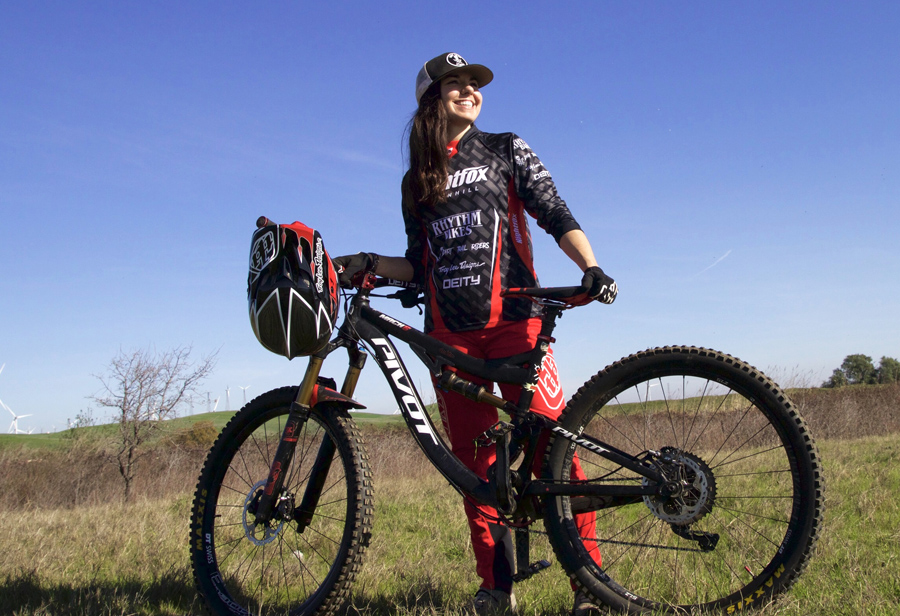
Cross-Country (XC) Riding:
Terrain: Cross-country trails are typically less technical, with smoother paths and moderate inclines.
Recommended Tire Size: 29-inch tires are the go-to choice for cross-country riders. The larger diameter provides better rolling efficiency and speed, helping riders maintain momentum over long distances and mild obstacles.
Trail Riding:
Terrain: Trail riding covers a mix of terrains, including moderate technical sections, rocky paths, and varied elevation.
Recommended Tire Size: 27.5-inch tires strike a balance between agility and stability, making them ideal for trail riding. They offer better maneuverability than 29ers while still providing good speed and rollover capabilities.
Enduro Riding:
Terrain: Enduro trails feature a combination of steep climbs, technical descents, and varied obstacles.
Recommended Tire Size: Both 27.5-inch and 29-inch tires are suitable for enduro riding, depending on rider preference. 27.5-inch tires offer more agility and quicker handling, whereas 29-inch tires provide better stability and rolling efficiency on rough descents.
Downhill Riding:
Terrain: Downhill trails are steep, technical, and filled with challenging obstacles like rocks, roots, and jumps.
Recommended Tire Size: 27.5-inch tires are generally favored for downhill riding due to their superior maneuverability and control. The slightly smaller size allows for quick direction changes and better handling at high speeds.
Fat Biking:
Terrain: Fat biking typically involves riding on snow, sand, or other soft surfaces.
Recommended Tire Size: Fat bikes use extremely wide tires, often 26-inch in diameter but with widths up to 4.8 inches. These tires provide maximum traction and floatation on soft surfaces, making them ideal for fat biking conditions.
When choosing the right tire size for your mountain bike, consider the type of terrain you most frequently ride on and your preferred riding style. Understanding how different tire sizes perform in various conditions will help you make an informed decision, ensuring you get the best performance and enjoyment out of your rides.
Did you know that?
The tread pattern on mountain bike tires can significantly impact your ride. Aggressive, knobby treads provide better grip and control on loose and muddy terrain, while smoother, less aggressive treads are ideal for hard-packed trails and fast rolling. Selecting the right tread pattern for your typical riding conditions can enhance your bike’s performance and your overall riding experience.
2.2. Rider Weight and Bike Geometry
When selecting the right tire size for your mountain bike, two critical factors to consider are your weight and the geometry of your bike. These elements significantly impact tire performance and, ultimately, your riding experience.
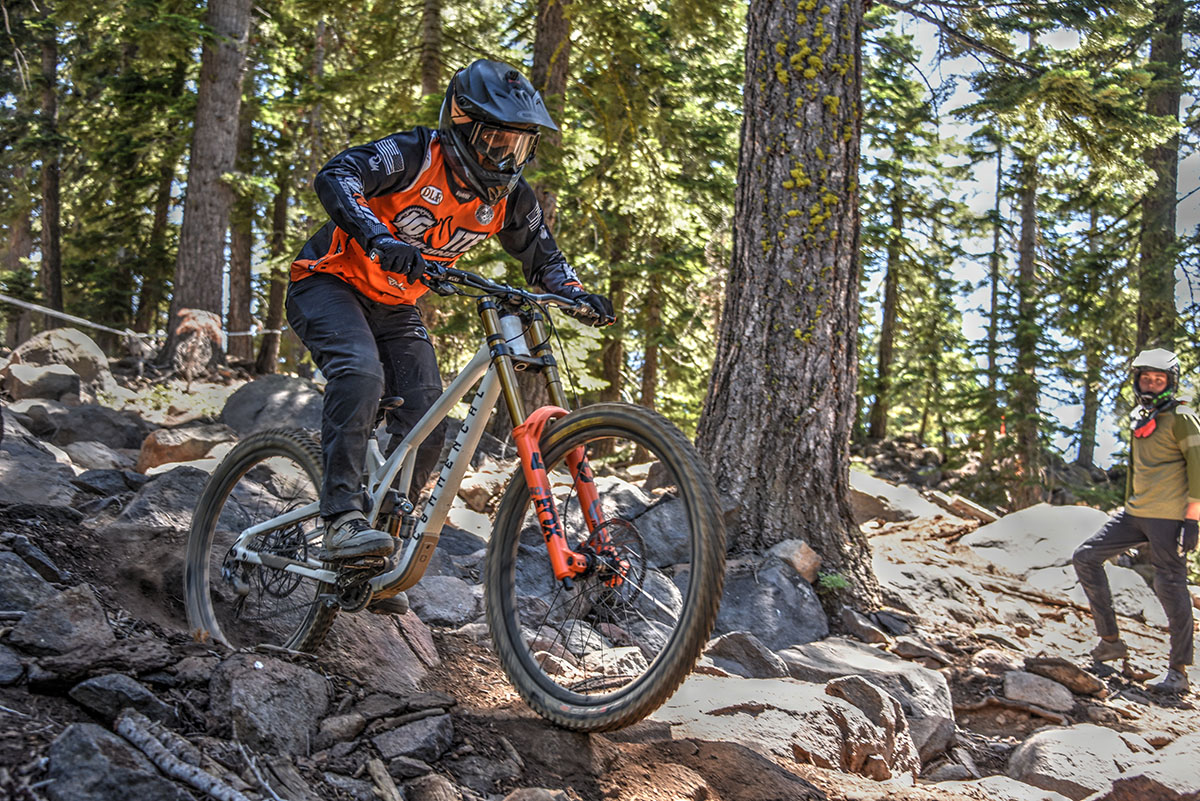
Impact of Rider Weight on Tire Performance
Rider weight directly affects how a tire behaves under different conditions. Heavier riders typically need tires with a higher volume and wider profile to distribute their weight more evenly, which helps prevent pinch flats and improves traction. Wider tires also offer a larger contact patch with the ground, enhancing stability and control, especially on rough or loose terrain.
Conversely, lighter riders might prefer narrower tires, as they generally require less air pressure to maintain optimal performance. These tires can roll faster on smoother trails and are often lighter, contributing to a more agile and responsive ride. However, it’s essential to strike a balance between tire width and the type of terrain you typically ride on to ensure you have the necessary grip and cushioning.
How Bike Geometry Influences Tire Size Selection
Bike geometry plays a crucial role in determining the ideal tire size. Modern mountain bikes come in various geometries designed to excel in specific riding styles, from cross-country to downhill. Understanding your bike’s geometry can help you make informed decisions about tire size.
Cross-Country (XC) Bikes: Typically have steeper head angles and shorter wheelbases, making them nimble and efficient on climbs. These bikes often pair well with narrower tires (around 2.0-2.3 inches) that roll faster and reduce rotational weight.
Trail Bikes: With a more balanced geometry, trail bikes are versatile and can handle a variety of terrains. They usually accommodate medium-width tires (2.3-2.5 inches), offering a good mix of speed, grip, and comfort.
Enduro and All-Mountain Bikes: Feature slacker head angles and longer wheelbases for stability on descents. These bikes benefit from wider tires (2.4-2.6 inches) that provide extra traction and cushioning over rough terrain.
Downhill (DH) Bikes: Designed for steep, technical descents, DH bikes have the slackest geometry and longest wheelbases. They require the widest tires (2.5 inches and above) to handle high speeds and absorb big impacts.
By considering your weight and understanding your bike’s geometry, you can select the tire size that optimizes performance, enhances safety, and maximizes your enjoyment on the trails.
2.3. Tubeless vs. Tubed Tires
When it comes to mountain biking, choosing between tubeless and tubed tires is an important decision that can significantly impact your riding experience. Each system has its advantages and disadvantages, and understanding these can help you make the best choice for your needs.
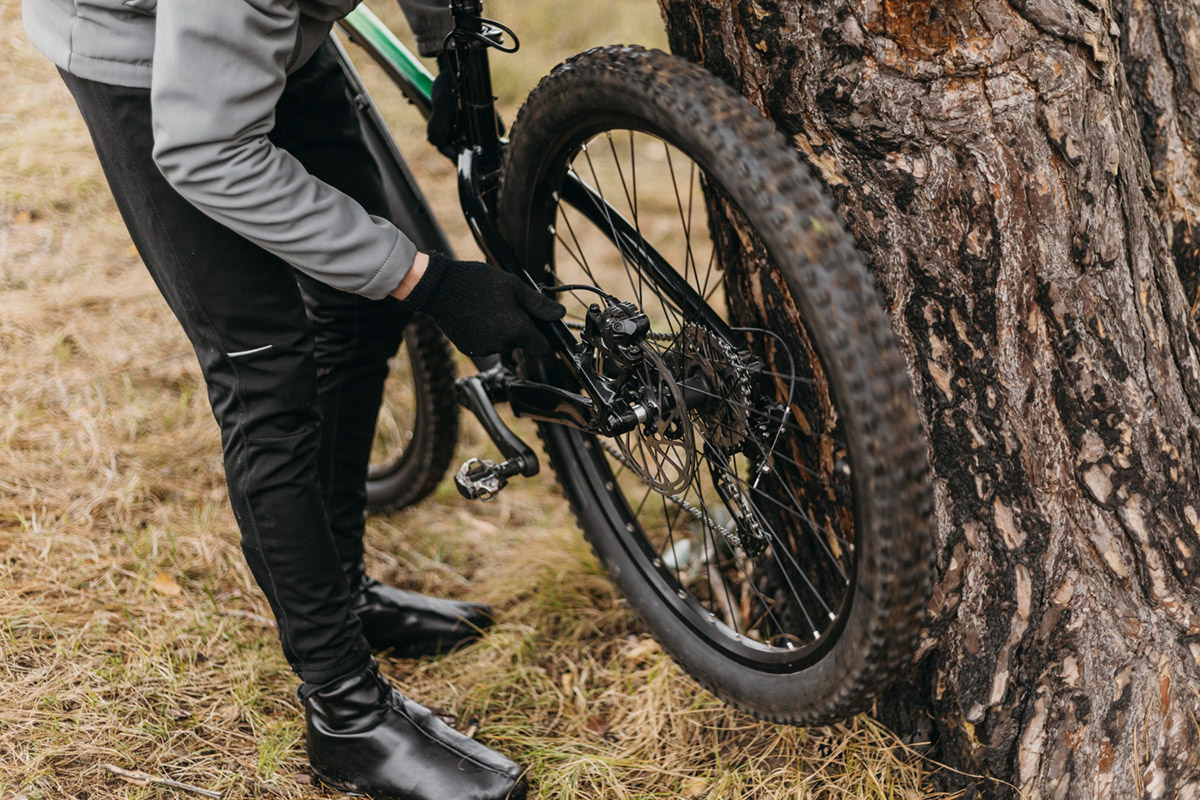
Advantages:
Reduced Risk of Flats: Tubeless tires are less prone to punctures and pinch flats because there is no inner tube to pinch between the tire and rim.
Lower Tire Pressure: Tubeless systems allow you to run lower tire pressures without the risk of pinch flats, which can improve traction and comfort on rough terrain.
Improved Ride Quality: Lower pressures and the absence of an inner tube result in a smoother ride, as the tire can conform better to the trail surface.
Weight Savings: Eliminating the inner tube can reduce the overall weight of your bike, enhancing efficiency and speed.
Disadvantages:
Initial Setup: Setting up tubeless tires can be more complex and time-consuming compared to tubed systems. It often requires specific tools and techniques to ensure a proper seal.
Maintenance: Tubeless systems require regular maintenance, such as adding sealant and checking for leaks, to maintain their performance.
Cost: Tubeless tires and compatible rims are generally more expensive than traditional tubed systems.
Compatibility of Tubeless Systems with Different Tire Sizes
Tubeless systems are widely compatible with various tire sizes, including the standard 26″, 27.5″, and 29″ mountain bike tires. Most modern mountain bike rims are designed to be tubeless-ready, making it relatively easy to switch from a tubed to a tubeless setup. However, it’s essential to ensure that your rims and tires are compatible with tubeless technology.
When choosing tubeless tires, consider the type of terrain you typically ride and your specific riding style. For instance, wider tires with lower pressure are advantageous for rough and technical trails, while narrower tires with slightly higher pressure might be better suited for cross-country riding.
In conclusion, while tubeless tires offer several performance benefits, they also come with additional setup and maintenance considerations. Evaluating the advantages and disadvantages can help you decide if tubeless is the right choice for your mountain biking needs.
3. Understanding Wheel Sizes
3.1. Wheel Diameter and Width
Understanding wheel diameter and width is crucial for optimizing your mountain biking experience. Wheel diameter, measured in inches, primarily affects the bike’s ability to roll over obstacles and its overall stability. Larger diameters, such as 29 inches, offer improved rollover capabilities, making it easier to navigate rough terrain and maintain momentum. They provide a smoother ride and better traction due to the larger contact patch with the ground. On the other hand, smaller diameters, like 26 inches, allow for quicker acceleration and enhanced maneuverability, making them ideal for technical trails and sharp turns. The 27.5-inch wheels strike a balance between the two, offering a mix of agility and stability, suitable for various riding styles.
Wheel width also plays a significant role in tire choice and bike handling. Wider rims support broader tires, which can be run at lower pressures for increased traction and comfort. This setup is particularly beneficial for trail and enduro riding, where grip and control are paramount. Conversely, narrower rims and tires are lighter and faster, making them suitable for cross-country racing, where speed and efficiency are critical. However, they may not provide the same level of comfort and stability on rougher terrain.
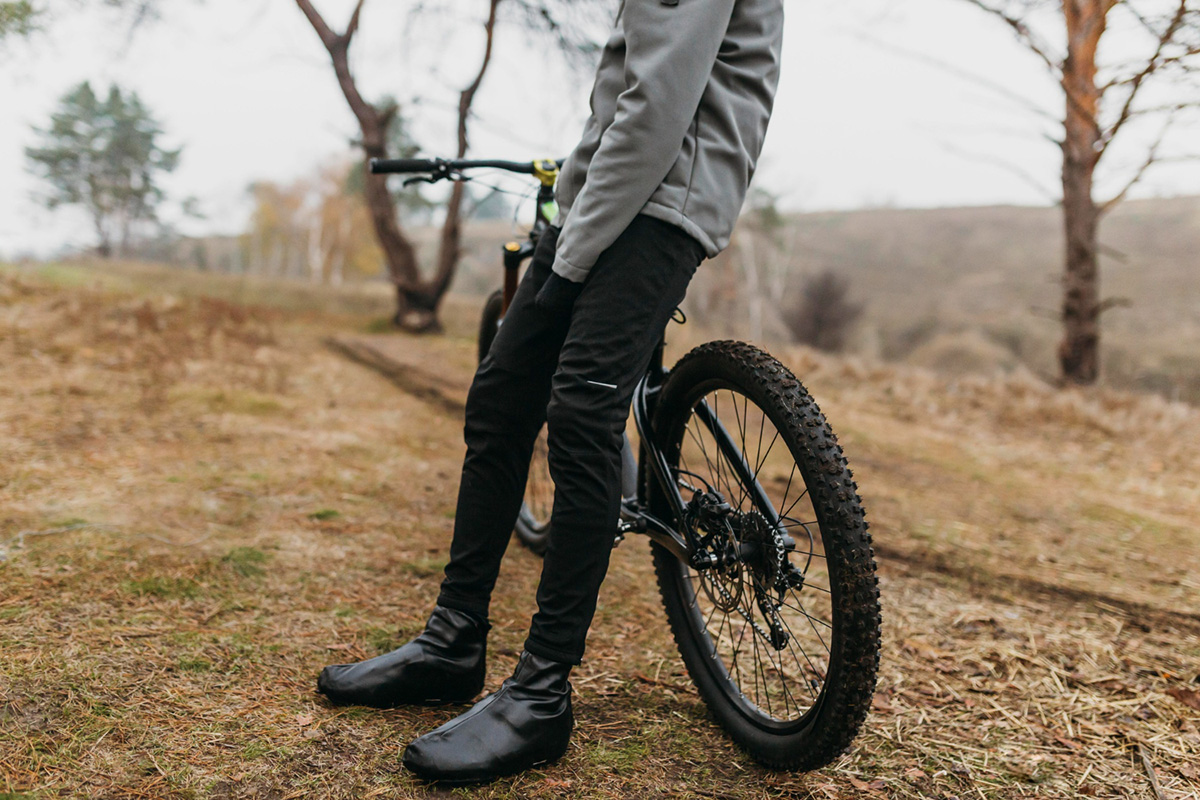
3.2. Common Wheel Sizes and Their Uses
When it comes to mountain biking, wheel size significantly influences your riding experience, and understanding the common sizes—26″, 27.5″, and 29″—can help you choose the best fit for your riding style. The 26″ wheels, once the standard, are now less common but still favored for their agility and quick handling. They excel in technical, tight trails and are a great choice for riders who prioritize maneuverability and acceleration over stability.
The 27.5″ wheels, also known as 650B, offer a middle ground between the agility of 26″ wheels and the stability of 29″ wheels. This size is ideal for trail and enduro riding, providing a balanced mix of speed, traction, and control. They handle technical sections well while maintaining enough speed and stability for varied terrain.
Lastly, 29″ wheels, or 29ers, are popular for their superior rollover ability and momentum retention. These wheels shine in cross-country and marathon disciplines, where long-distance efficiency and the ability to maintain speed over obstacles are crucial. They also provide excellent traction and stability, making them suitable for downhill and all-mountain riding.
4. Tire Tread Patterns and Compound
4.1. Tread Patterns Explained
When it comes to mountain bike tires, tread patterns play a crucial role in determining performance across various terrains. Tread patterns are designed with different purposes in mind, ranging from maximizing traction on loose surfaces to enhancing rolling efficiency on hard-packed trails. For instance, aggressive tread patterns with deep, widely spaced knobs are ideal for muddy and loose conditions, as they provide superior grip and prevent mud from clogging the tire. On the other hand, tires with smaller, closely spaced knobs offer less rolling resistance and are better suited for hard-packed trails and smooth surfaces.
Choosing the right tread pattern for your riding conditions can significantly impact your bike’s performance. For example, cross-country riders often opt for tires with low-profile tread patterns that offer a balance between grip and speed, while downhill riders prefer aggressive treads for maximum traction and control. For all-mountain or enduro riding, which involves a mix of terrains, a versatile tread pattern that combines elements of both is ideal. Understanding your typical riding conditions and selecting a tread pattern that matches can enhance your riding experience and safety.
4.2. Tire Compound and Durability
Tire compounds refer to the rubber used in the tire’s construction, and they play a significant role in determining grip and durability. Softer compounds generally provide better traction, especially in wet or loose conditions, but they wear out faster. Conversely, harder compounds are more durable and offer lower rolling resistance, making them suitable for dry, hard-packed trails and long-distance riding.
Selecting the right tire compound depends on your riding style and the conditions you typically encounter. If you frequently ride on rocky or rough terrain, a harder compound might be more beneficial due to its durability. However, for those who prioritize grip and performance in technical sections, a softer compound would be preferable. Some tires use a dual compound, combining a harder center for reduced rolling resistance and softer edges for improved cornering grip, offering a balanced solution for varied riding conditions. Understanding the trade-offs between grip and durability can help you choose the best tire compound for your needs, ensuring optimal performance and longevity.
COMMON QUESTIONS
Is a 27.5 inch bike good for what height?
A 27.5-inch bike is generally suitable for riders with a height ranging from approximately 5’2″ to 6’2″ (157 cm to 188 cm). This wheel size offers a versatile balance between the agility of a 26-inch wheel and the stability of a 29-inch wheel, making it a popular choice for a wide range of heights.
It provides a good blend of maneuverability and roll-over capability, making it suitable for various terrains and riding styles. However, the ideal bike size also depends on the specific frame geometry and personal preferences, so it’s important to test ride different sizes if possible.
How do I know what wheels should I buy for my bike?
To determine the right wheels for your bike, consider your riding style, terrain, and bike compatibility. First, check your bike’s specifications for recommended wheel sizes, usually found on the frame or in the owner’s manual. For mountain biking, common sizes are 26″, 27.5″, and 29″.
Your riding style also matters: 29″ wheels are great for cross-country and endurance, 27.5″ for trail and all-mountain, and 26″ for technical or downhill riding. Ensure the wheels match your bike’s axle type (quick release or thru-axle) and brake system (rim or disc). Consulting your local bike shop for expert advice is also helpful.
Are carbon MTB wheels faster?
Yes, carbon MTB wheels can be faster due to their lighter weight and improved stiffness. The reduced weight enhances acceleration and climbing efficiency, while the increased stiffness provides better power transfer and responsiveness, improving overall speed. Additionally, carbon wheels often have aerodynamic profiles that reduce drag, further enhancing speed.
However, it’s important to note that while carbon wheels can offer performance benefits, they can also be more expensive and less durable than aluminum wheels. The choice depends on your riding style, terrain, and budget, but for competitive riders seeking a performance edge, carbon wheels are often a preferred option.
CONCLUSION
Choosing the right tire and wheel size for your mountain bike is crucial for optimizing performance, comfort, and safety on the trails. Understanding the basics of tire and wheel dimensions, the impact of riding style, terrain, rider weight, and bike geometry can help you make an informed decision.
Additionally, considering factors like tubeless vs. tubed tires, wheel diameter, width, and tread patterns ensures your bike is tailored to your specific needs. With the right combination, you’ll enhance your riding experience, whether you’re tackling cross-country routes, enduro challenges, or downhill descents. Equip your bike wisely and enjoy the ride!

Get Social